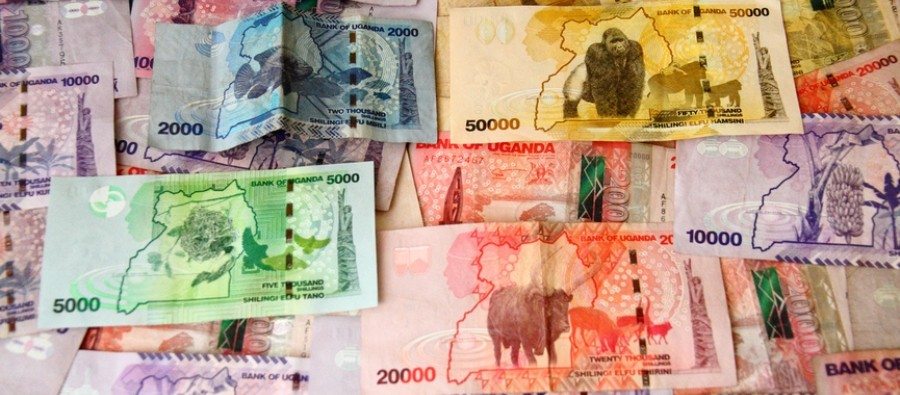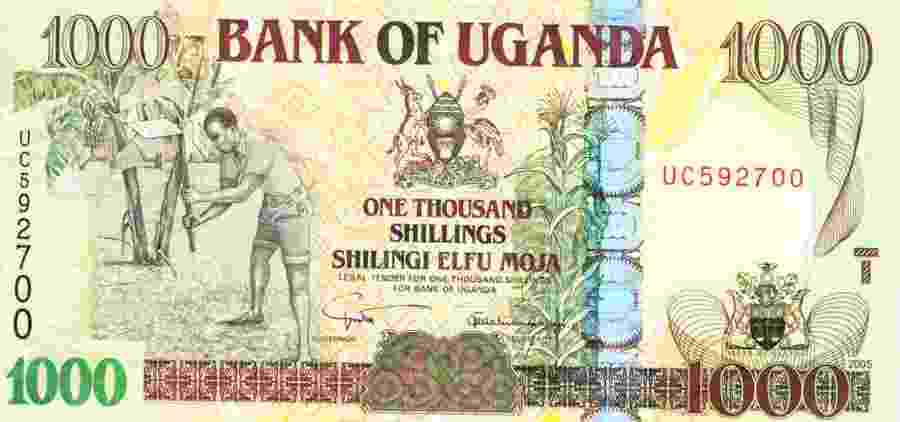Uganda as a country is located in the Eastern part of Africa. She was colonized by the British and got her Independence in 1962.
Uganda practices a Democratic system of government and ranked to be among the fastest growing economies in Africa. Geographically, the southern part of Uganda includes a substantial portion of Lake Victoria, one of the most remarkable lakes in Africa, shared by Kenya and Tanzania. The Ugandan Shilling is the official trade currency of the country and its units are the cents.
Incredible Facts About Ugandan Shilling
History and Transition of Ugandan Currency – Bank Notes
Uganda started making use of her own currency after the fallout of the then Eastern African Currency Board. However, they stopped making use of the East African Shilling in 1966. The new currency was introduced by the then Ugandan Government as the Ugandan Shilling and this was under The Bank Of Uganda Act of 1966. The shilling is now a predominant legal tender and used in all financial transactions in the country to date.
Read Also: Things You Didn’t Know About The Hilarious Ugandan Comedian Ann Kansiime
The Ugandan currency has evolved about seven times since it was first introduced and these evolutions are as follows:
First for the transition of the banknote. In 1966, which was the year the Ugandan currency was introduced, currency notes on 5 Shillings, 10 shillings and 20 shillings were introduced. The banknotes came with a palm-like watermark. In 1971, a new administration came into power and after 2 years (1973), the administration made some changes on the banknotes. Also, the 50 shillings currency was introduced, and all the banknotes had Idi Amin as the portrait on them although a new government administration had the portrait removed in 1979.
With the inception of a new administration in Uganda in 1983 came the introduction of the 500 Shillings and 1000 Shillings notes and the currencies had the portrait of then President Milton Obote on them. In 1986, a new government came to power and it made various changes to the already existing currencies, by removing the portrait of President Milton Obote, and replacing it with a National Emblem.
The new administration also introduced the 5,000 Shillings currency. In 1995 a new denomination of 10,000 Ugandan shilling was introduced. In 1999, the 20,000 Shilling currency was introduced and this was followed by the 50,000 Shilling banknotes, which was introduced in 2003.
In 2001, 5, 10,20,50,100,200, and 500 Ugandan Shillings banknotes were withdrawn from the national currency. Just the 1,000 and 5,000 Ugandan Shilling Bank notes were in use. So, currently, the Uganda banknote currency consists of 50,000 Shillings, 20,000 Shillings, 10,000 Shillings, 5,000 Shillings, 2,000 Shillings and 1,000 Uganda Shillings.
The transition of Ugandan Coins:
Just like its counterpart, the Ugandan coins has changed and transited much from the time it was introduced but not as much as the banknotes did and this transitions are as follows:
The first set of Ugandan coins were introduced in 1966 and it came with the following denominations: 5 cents, 10 cents, 20 cents and 50 cents, 1Shilling and 2 Shillings. The 5,10,20 and 50 cents were made of bronze while the 1 shilling and 2 shillings were struck in cupro-nickel. In 1972, the 5 Shilling coin was introduced but was also withdrawn from circulation that same year and in 1976, some changes were made to the coins. The bronze in the 5 and 10 Cents was changed to copper plated steel. In 1998, the 50, 100,200 and 500 shilling coins were introduced.
Ugandan Currency Exchange Rate
Just like every other currency fluctuates due to demand and supply, so also does the Ugandan Shilling vary when compared to other currencies in the world. The exchange rate moves up and down as a result of many factors. That notwithstanding, between the year 2011 and 2012, the exchange rate of the Uganda currency when compared or converted to US dollars went up as high as 2,850(UGX) for 1 dollar and came down as low as 2,300(UGX) for 1 (USD).
Below are the current exchange rates of the Ugandan Shilling against other currencies. (Note that this is highly volatile and is subject to change at any time. For dollars,1(USD)=2,582(UGX), for pounds,1(GBP)=4,030(UGX), for Euros1 (EUR)=3,390(UGX), For Naira 1(NGN)=0.063(UGX).
Ugandan Currency: National Heritage
The 20,000 Ugandan Shilling note, has the images of Coat of Arms, Traditional drum, the Uganda Kob which stands for Fertility, Image of River Nile, and in front, it has the image of the Parliament Building in Kampala. Coffee and cotton which are important cash crops that drive foreign exchange can also be seen in the currency.
The 50,000 Uganda Shilling has the image of the National Monument, The Coat of Arms, waves of a river, Lake Victoria and the Ugandan Kob. The back has pictures of Uganda farmers picking cotton which is one of the major agricultural products produced in the country
Read Also: 20+ Tallest Buildings in Uganda
The 10,000 Ugandan Shilling has the image of a stylish musical instrument and this depicts the musical heritage of the people of Uganda, It also has the image of the Coat of Arms which depicts spears and the waves of the Lake Victoria. The back side of the currency has the image of Kiyira hydro-electric power station, located on the Victoria Nile of Jinja which is the major power station in the country.
The 5,000 currency note has the images of Lake Bunyonyi and its terraces. It also has the Coat of Arms and the backside of the currency has the image of MV Kaawa Ferry on Lake Victoria.
The 1,000 Currency note has the images of a peasant working on a banana plantation, the Coat of Arms and the Ugandan Kob. The backside of the note has the image of a Grain silo and lorries in front of a building.

